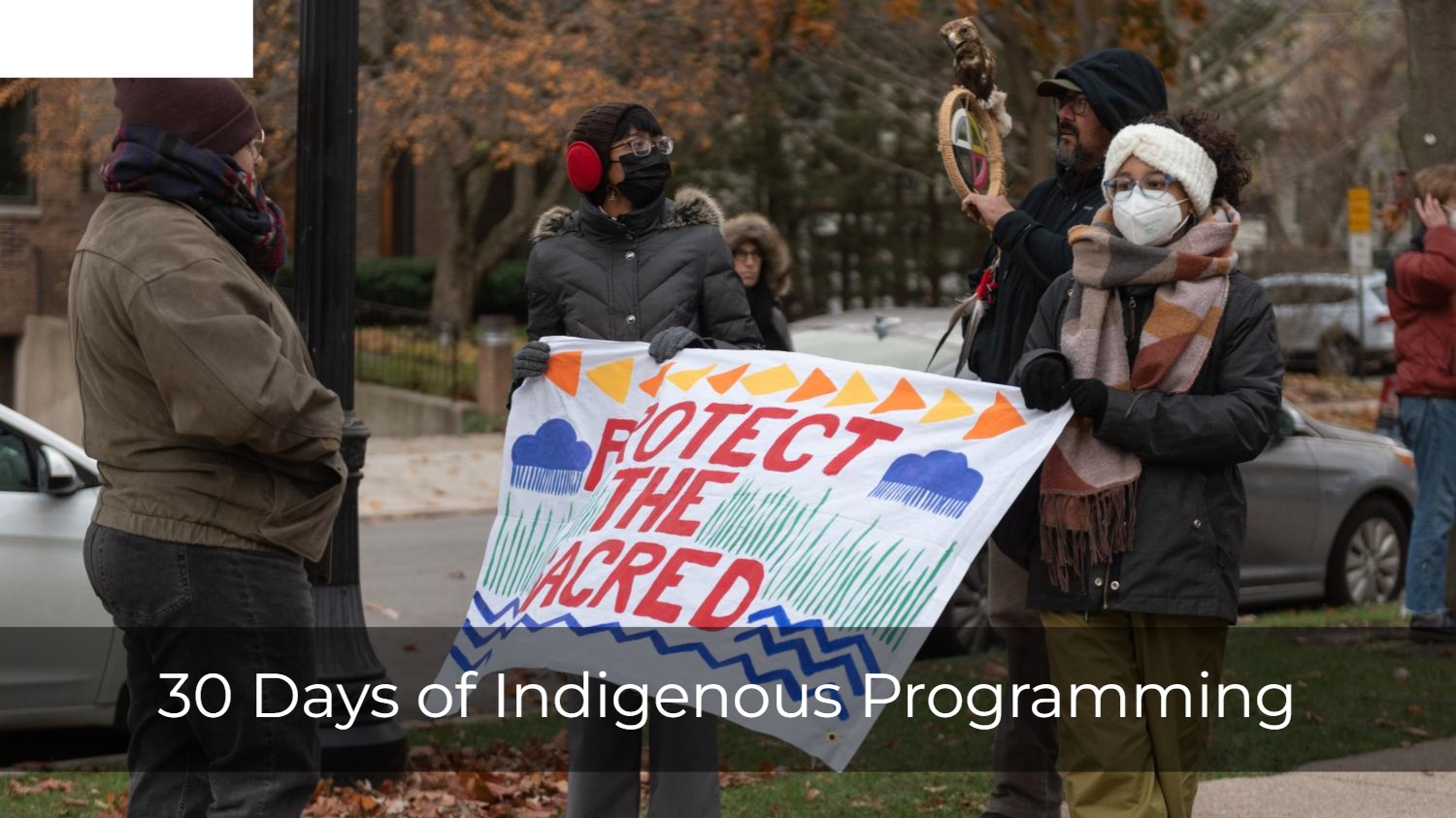On Nov. 10, the ground floor of the Norris University Center was filled with the sounds of drums, singing, and dancers’ bells.
Some of the windows had a purple sticker of a land acknowledgment. A Menominee catering service called Ketapanen Kitchen made a spread with cloves of garlic, sweet potatoes, bison, squash, wild rice with berries, and more.
The food-tasting event, which also had drum and dance performances, was part of a more extensive series of events called “30 Days of Indigenous.”

It was put on by Multicultural Student Affairs, the Center for Native American and Indigenous Research, and the Office of Institutional Diversity and Inclusion to celebrate Native American and Indigenous Heritage Month.
“I could really taste the maple syrup. “It was just full of flavor,” said Jasmine Gurneau, who is in charge of Native American and Indigenous Affairs.
“It was great to see that. It touched all of our senses: taste, smell, sound, and sight.” This month’s programming is about being a good relative.
Gurneau, who is enrolled with the Oneida Nation and is a descendant of the Menominee Nation, said that this shows the layers of complexity in Native American and Indigenous communities.
Gurneau said that she hopes the programming shows the many different parts of Indigenous life and history. There are more than 570 tribes in the U.S., and each has its own traditions, languages, and laws.
Gurneau said that the Haudenosaunee people, which includes the Oneida, remember the seven generations that came before them and the seven generations that will come after them.
She also said that it is essential to show respect to relatives who are not people, such as places, land, and water.
Athena GoingSnake, a sophomore at SESP who is Muscogee Creek and a citizen of the Cherokee Nation, said, “This month is imperative to me, especially since I wasn’t home last year or this year.”
“To be a good relative, you have to respect and take care of the people around you, listen to the people and things around you, and do what your elders tell you.”
The Sand Creek Massacre was remembered by MSA, the Office of Institutional Diversity and Inclusion, and the Native American and Indigenous Student Alliance on Thursday.

In 1864, the U.S. Army killed about 230 Cheyenne and Arapaho people in a mass killing. 158 years later, people took part in a procession and heard from Indigenous students and people from the community.
NAISA co-chair GoingSnake said, “It’s hard to talk about, but it’s important to bring people together to have these hard conversations.”
“I loved the parade afterward because I got to drink hot chocolate and talk to people from my neighborhood. It helped me feel better, which is what I needed.”
A report from the University of Denver says that John Evans, who helped start Northwestern, took part in the Sand Creek Massacre.
NU said in its own report from 2014 that Evans didn’t know about it ahead of time. The Colorado Geographic Naming Advisory Board decided Thursday that Mount Evans should be called Mount Blue Sky.
After the governor of Colorado and the U.S. Board on Geographic Names give their approval, the change will be made official.
Alivia Britton, who is Odawa and a sophomore at SESP and the NAISA Treasurer, said, “It’s great and a step in the right direction to recognize what happened in the past and find ways to heal and move on.”
GoingSnake said that changing the name is a big step toward giving Native people more rights to sovereignty and making them more known.
Britton said that when Indigenous people are talked about in schools, it’s as if they only lived in the past.
GoingSnake and Britton both said that the University needs to apologize for its previous report and say that Evans was involved in the Sand Creek Massacre.
“Northwestern tends to hide from its past, and I think now is a good time to stop being a coward and just step up,” Britton said.
Source: The Daily Northwestern

